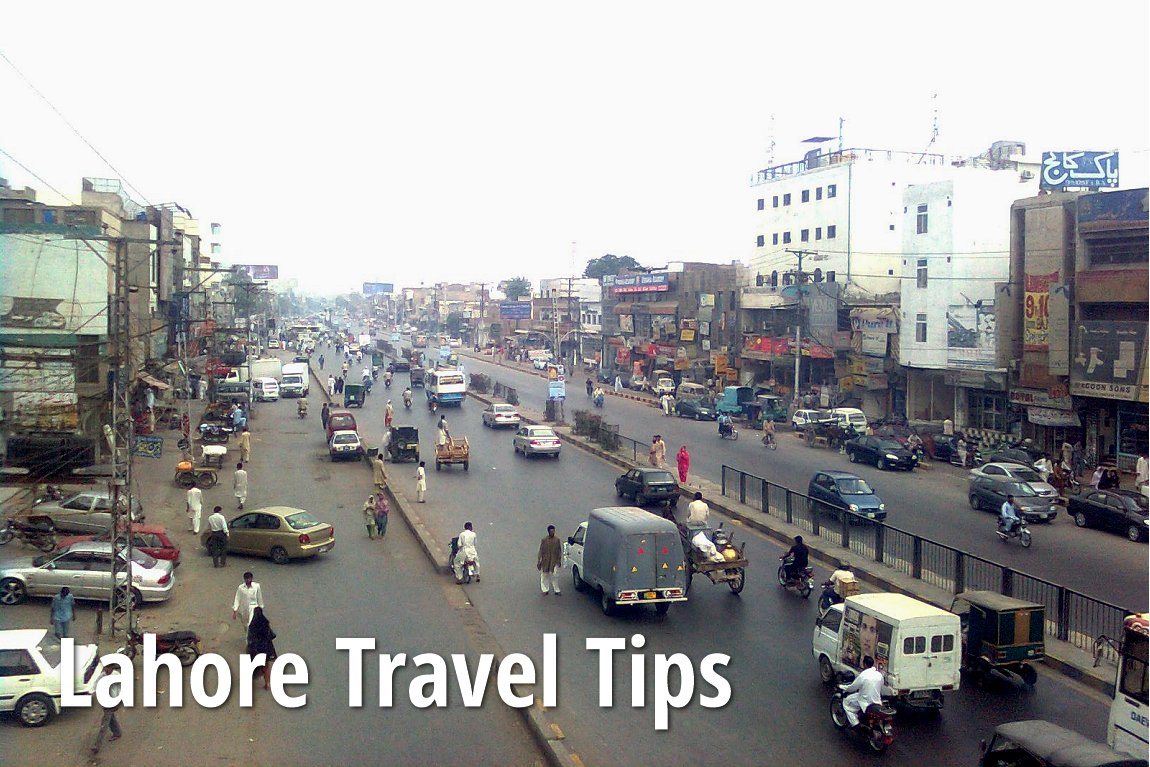 Ferozepur Road, Lahore | Lahore
Ferozepur Road, Lahore | LahoreSource: https://commons.wikimedia.org/wiki/File:
Ferozepur_Road_near_Ichhra_bazar.jpg
Author: Jugni

Ferozepur_Road_near_Ichhra_bazar.jpg
Author: Jugni

Lahore (Urdu: لاہور Punjabi: لہور) is the second biggest city in Pakistan. Covering 1,772 sq km (684 sq mi), it has a population of 6.3 million people (2011 estimate) within a metropolitan area with 10 million population. The city is the provincial capital of the Pakistani province of Punjab.
Lahore is located by the banks of the Ravi River, at an average elevation of 217 m (684 ft). It is 32 km from the city of Amritsar, in the Indian state also called Punjab.
Lahore experiences a hot semi-arid climate. Temperatures in summer is extremely high, with June averaging 40°C (104°F), some times even reaching 48°C (118°F). In January, on the other hand, the temperature drops to between 6°C and 20°C, although a record low of -1.1°C (30°F) has been registered before, in 1967. Rain is heaviest in July, which records 202 mm of precipitation.
Lahore is often regarded as the cultural heart of Pakistan. It is a center for the arts, for literature, for education as well as for Pakistani cuisine. It is a place famous for its festivals and film making as well as for music and Pakistani-style gardening. The city is also a center for publications, with some 80 percent of the books in Pakistan being published in Lahore.
The history of Lahore is a mix of facts and legend. It tells of a city called Lavapuri (meaning "city of lava" in Sanskrit), which was founded by Prince Lava, the son of Rama, the Hindu deity. Ptolemy mentioned a city called Labokla in his Geographia, in the 2nd century AD.
The oldest document mentioning Lahore dates back to AD 982. The document, called Hudud-i-Alam, meaning "regions of the world", described Lahore as a city inhabited by infidels. The city was also described by Chinese pilgrim Hieun-tsang, who visited it in the 7th century AD. In any case, there is no conclusive documentation of when Lahore was actually established, but plopular belief holds that it has been inhabited for over 2,000 years.
Lahore was ruled by the Ghaznavid Empire, beginning when Sultan Mahmud of Ghazni conquered it in the 11th century. When the Ghaznavid Empire collapsed in the 13th century, it came under the rule of Turk dynasties known as the Delhi Sultanate. Then in 1524 it became part of the Mughal Empire. During Mughal rule, Lahore became a city of learning, with scholars converging on it from various parts of the Muslim world.
By the 17th century, the Mughal Empire was in decline, but it remained in control of Lahore until 1752, when the Sikhs took control following years of chaos. Under Maharajah Ranjit Singh, the Sikhs expanded their empire all the way to the Khyber Pass as well as to present-day Jammu and Kashmir. However, at the same time, the British were expanding their influence in the Indian subcontinent. Following the death of Maharajah Ranjit Singh in 1839, the empire was fragmented, and within ten years, the British was able to extend their control over Lahore.
Lahore was under the British Raj until the 20th century, and was influential in the independence movement of India. The All India Muslim League held a session in Lahore in 1940, where they demanded a separate state for Muslims. This led to the creation of Pakistan. Pubjab was also partitioned between India and Pakistan, which led to the founding of the city of Chandigarh, as the state capital of Punjab (and also of Haryana).
After independence, although Lahore remains the capital of Punjab Province, it was eclipsed by Karachi, the national capital. Only in the 1990's that it began to revive, as an economic and cultural hub of Pakistan.
Visiting Lahore
Foreign visitors arrive at the Allama Iqbal International Airport (LHE), the second-biggest civilian airport in Pakistan. There are taxis and shuttle buses connecting the airport with downtown Lahore. A subway line is also being planned.Places of Interest to visit in Lahore
- Badshahi Mosque
Built by the Mughal Emperor Aurangzeb, it was for hundreds of years the biggest mosque in the world. - Jehangir's Tomb
Tomb of the Mughal ruler who was the father to Emperor Shah Jahan. - Lahore Fort
This massive fortress was erected by the Mughals, and is today a World Heritage Site, a joint inscription with Shalamar Garden. - Lahore Museum
This splendid museum, established in 1894, showcases treasures from the Mughal and Sikh rules in Lahore. - Masjid Wazir Khan
Mosque built by Mughal Emperor Shah Jahan is noted for its beautiful tilework. - Minar-e Pakistan
A 60-meter concrete tower located in Iqbal Park, is often described as the Eiffel Tower of Pakistan. - Raushnai Gate
Medieval gate between the royal mosque and the citadel. - Shalamar Garden
Mughal pleasure garden built by Emperor Shah Jahan, and today a World Heritage Site, a joint inscription with Lahore Fort.
 Latest updates on Penang Travel Tips
Latest updates on Penang Travel Tips
 Map of Roads in Penang
Map of Roads in Penang
Looking for information on Penang? Use this Map of Roads in Penang to zoom in on information about Penang, brought to you road by road.
Copyright © 2003-2025 Timothy Tye. All Rights Reserved.

 Go Back
Go Back